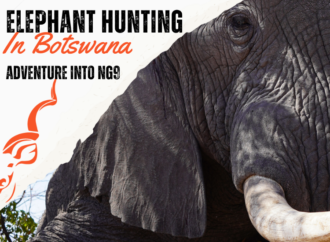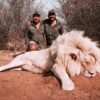Karamojo Bell leaves a lasting impact on the field of African hunting history. Ballisticians study him, traditionalists respect him, and modern conservationists examine him closely.
The Introduction to a Legendary Hunter – Karamojo Bell
Few names in the golden twilight of Africa’s colonial past ring with such respect and discussion as W.D.M. “Karamojo” Bell. Bell is known for his cool reasoning and mechanical accuracy in stalking and killing savanna giants, as well as for his incredible elephant count. Bell is ingrained in hunting mythology. His legend lives—half hunter, part philosopher, part adventurer.
The One Who Stands Behind the Rifle
Walter Dalrymple Maitland Bell was born in Scotland, a country as untamed and wild as the man himself would have become in 1880. Bell chafed in traditional life and was orphaned young. The sea originally called to him; he was in the Royal Navy before looking inland—into the mystery of Africa. There, in the most far-off wilds of East Africa, he came to be known as “Karamojo,” from the hostile Karamoja area, where few ventured and fewer yet returned. It was a moniker awarded by whispered stories and respectful gestures, not a name taken for vanity.
The Skills of Accuracy
Bell was an iconoclast in attitude as much as in his techniques. While his contemporaries favored massive calibers to bring down elephants—.450s and beyond—Bell employed the elegant and comparatively diminutive the .275 Rigby, equivalent to the 7x57mm Mauser. Most of them thought this was stupidity. To Bell, it was a work of art. He turned from overwhelming force toward surgical accuracy. His philosophy was straightforward but bold: know the anatomy, locate the brain from all sides, and shoot once—with exactitude. The outcomes were astonishing.
An Explorer of the Wild Cartographer
Bell, though, was more than simply an elephant killer. He was a cartographer of extinct frontiers and a chronicler of untamed regions. Long before satellite pictures and GPS numbers, he carefully sketched the topography of Uganda, Sudan, and beyond, negotiating the unmarked boundaries. More like anthropological riches than simply hunting records, his writings are mosaics of landscape, wildlife patterns, and tribal wisdom.
The Karamojo Expedition
Of Bell’s several expeditions, the 1902 Karamojo one is still legendary. This was no pleasure hunt. It was a gauntlet of danger, malnutrition, and perseverance. Strong tribal militia protection drove back most invaders from the dry, remote area. Bell went ahead, negotiating terrain as unfriendly as its people. Malaria infiltrated their camps. Porters ran away. Bell won, nevertheless, returning with not only ivory but also a map devoid of nonexistent territory.
Elephant Hunting and Ivory Trails
Bell had killed well over one thousand elephants by the time he put his rifle down. Despite the contemporary discomfort, we must weigh this amount against his lifetime. Elephant hunting, to Bell, was more of high science than cruel killing. He tracked for days, studied his quarry, tested wind patterns, and occasionally approached just a few feet before delivering a brain shot with astounding calm. Even while he hunted them, he wrote consistently of respect for the elephant, noting their wisdom and grandeur.
Ballistics and Brain Shots
According to Bell, success was intellectual. He dissected elephant skulls to understand bullet trajectories. He could determine the angle of a perfect brain shot whether facing the animal head-on, from the side, or at quarter profile. He described the bullet’s path with geometric clarity, noting how even minor deviations could result in tragic wounding rather than swift dispatch. His focus on shot placement set the foundation for ethical hunting—a paradox, maybe, but a cautiously thought-out one.
Reevaluation and Conflict
Bell left a legacy entwined in contentious thorns. Detractors see in him the seed of overhunting, the progenitor of modern trophy culture. Others criticize his low-caliber approach as immoral or careless. Bell, though, was exact in avoiding pain. His records point to fewer injured animals than those of any of his colleagues. He hunted in an era of demand—ivory was currency—and within that frame, he operated with a code: clinical, detached, yet oddly reverent.
A Mind Beyond the Hunt
Bell’s intellect soared beyond the smoke of his rifle. He embraced the excitement of flight with the same zeal he previously reserved for the hunt and became an aviator in his senior years. His works, like The Wanderings of an Elephant Hunter, gleam with wit, caustic humor, and a philosophical perspective. He thought about solitude, instinct, and the conflict between wildness and society. Bell was a thinker in khaki, not only a trigger man.
Legacy of the Last Safari
The shadow of Karamojo Bell casts a long shadow over the field of African hunting history. Ballisticians study him, traditionalists respect him, and modern conservationists examine him closely. His influence permeates the history of big-game hunting, not just for what he did but how he did it—with minimalism, restraint, and intellectual rigor. His was the last safari of its kind, where man and wild met in primal equation—untouched by the clamor of modernity.
Bell may have vanished into history, but the echo of his philosophy—quiet, precise, unapologetically curious—still drifts across the acacia-dotted plains of Africa.


















Leave a Comment
You must be logged in to post a comment.